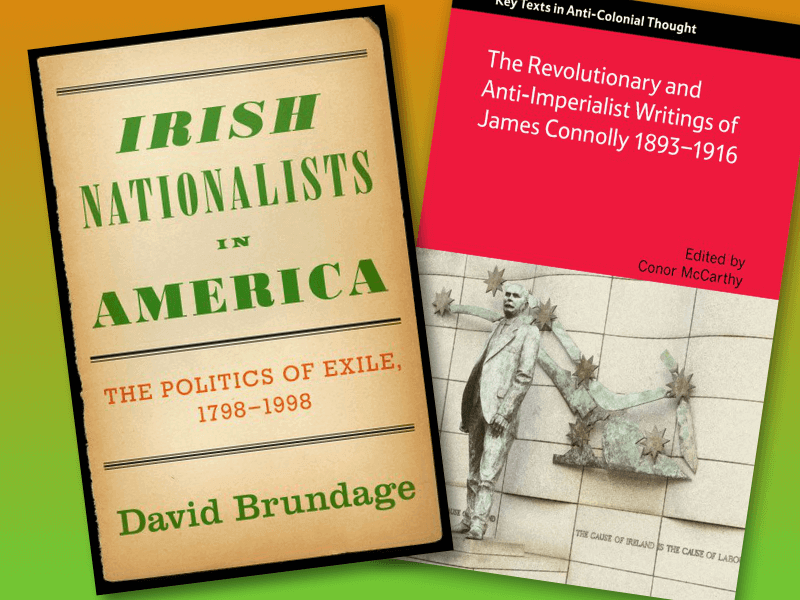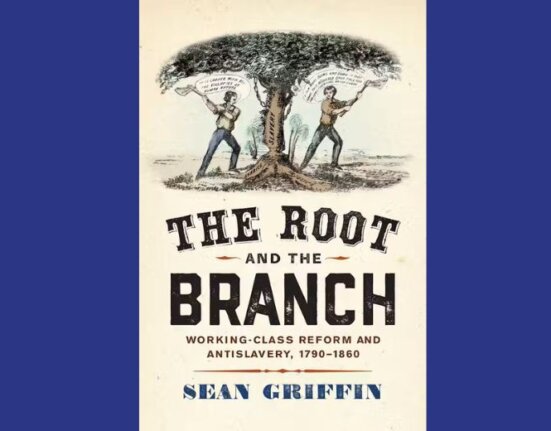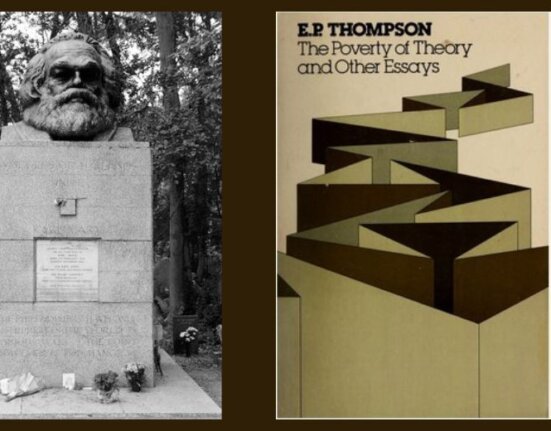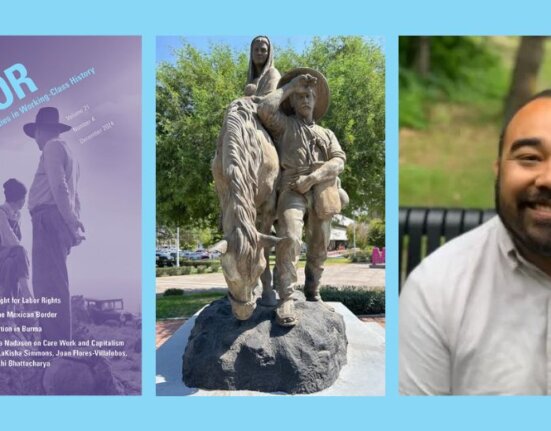We have had quite a year, in 2016, of Irish history, certainly the biggest for decades. The centenary of the 1916 uprising offered history buffs a veritable compulsion to write and speak on events, but more ordinary Irish men and women, at home and in the diaspora anywhere on the globe, to meet, pay more than the usual attention to lectures, also party, drink and perhaps above all, listen to music. Scholars are not likely to have the last word, but they have quite a few useful words to explain and interpret the larger issues of Irish dependency and Irish emancipation, with all the accompanying contradictions.
That history has, for more than a century, taken place very often abroad, close by in the industrial districts of Liverpool or Edinburgh, further away in Australia, New Zealand, Canada and the US. The last has had its special importance or value, not only because of the immigrant numbers involved, but also because of the opportunity to organize the diaspora and with that means, strive to change things at home.

David Brundage, a notable labor historian with decades of collaborative work on the totemic Who Built America? textbook project (launched by the late Herbert Gutman) and a fine monograph on the organized workers of Denver, here delivers a most effective overview. It begins poignantly—like so many things Irish—with a commemoration, in a Brooklyn graveyard, twenty years ago, over the widow of the romantic homeland martyr, Wolfe Tone. Like the death of Sholem Aleichem in the Bronx, this little event points toward an undeniable globalism. Tone, who despised his adopted American homeland, nevertheless made his way in it, an ally of radical republicans. He would be followed by many others, some as notable as economist Mathew Carey, Irish-American abolitionist Richard Davis Webb, and the host of Fenians who, at last, built something like a mass political movement. Brundage argues persuasively (p.102) that the Civil War made the Fenian support possible by bringing Irish immigrants into support for the Union, but evidence would also point toward the contrary, racist sentiment that ran deep, and would find its way into Irish causes for generations to come.
For that moment in the late 1960s and early 1870s, Irish nationalism even seemed to promise unity with the internationalists of socialist stripe–and then, with repeated failures to free the homeland, faded into a more ambiguous unity. John Devoy among others protested the devil’s deal with Tammany Hall, a political arrangement mirroring the larger impulse of Irishmen and their descendants to build exclusionary craft unions with heavy influence on the Democratic party and scarce sympathy for minorities, let alone socialists. The Irish cop, famed for his craving to lay a baton upon the head of a young socialist, preferably a teenage female, was also no phantom of anti-Irish prejudice but real by the 1880s and scarcely less real in the twenty-first century. Peter J. McGuire, a youthful socialist who led the carpenters’ union and became, along with Sam Gompers, a pronounced anti-socialist in later years, offered the middle term. If something like socialism and true liberation for Ireland, could not come, then advantages of every kind would be sought and taken.
Happily, we have Terence Powderly and the Knights of Labor, Henry George and the Single Tax, ardently radical supporters of the Land League and Home Rule and in the early twentieth century….James Connolly.

Here we switch gears, because The Revolutionary and Anti-Imperialist Writings of James Connolly allows us to enter the subject afresh. Connolly, perhaps the ultimate martyr, was only in the US from 1903 to 1910, but he was a whirlwind of activity. Not only did he organize for the IWW and the Socialist Party, not only did he pen stirring (and deeply sentimental) poetry, he published on the eve of his return home The History of Labour in Ireland, an extraordinary book in many ways. He also published The Harp and led the small but volatile Irish Federation of the Socialist Party represented in the irregularly appearing tabloid. He was everything that white-lace Irish-Americans but also building trades thugs (like George Meany’s father, and young Meany himself) and their like, considered dangerously, malevolently Irish. We see in McCarthy’s text that without benefit of Lenin, without benefit of the other Marxist discussions about imperialism that circulated mostly in the later 1910s, Connolly had worked out the basic lines of post-1920 global revolutionary thought. Through study of Irish history but also the role of imperial Britain in Africa and India, he grasped the project of colonialism and gave the lie to its bringing civilization to the backward world. Rosa Luxemburg’s Accumulation of Capital offered details, in these same years, but Connolly had the basics down pat.
We now return to post-Easter Uprising Ireland and its ambiguous fate, seen acutely by David Brundage. The ill role of de Valera, in the US as at home, did not successfully quash the significance of radical, pro-labor sympathizers, from journalist Charles Edward Russell and black nationalist Marcus Garvey to odd ducks like Chester Arthur III (grandson of the president) or the faithful republicans Irish-Americans at the grass roots. It seems easier than it should be for even labor historians to miss the radicalism of transit workers’ leader Mike Quill as being intimately connected to his Irish nationalist beginnings or, more important, to the ways in which he kept his union following close, as long as he could, to the Communists. And so the tradition went on, half seen, half hidden.
Daniel Patrick Moynihan–Richard Nixon’s favorite Irish-American intellectual, a UN hawk and the Cold War dragon-slayer who ended the political career of peacenik Bella Abzug—pronounced the Irish-American left and its homeland causes dead, more than once. (In the true worst traditions of Irish-Americana, he also pronounced the birth of black ghetto children to be “speciation,” the creation of sub-humans.) It could not be, and many an American location saw solidarity movements of size and vitality during the high point of the homeland conflict. Nowadays, the traces of the support for IRA/INA in the Time of Troubles are rather hard to find, even locally where they were so strong. The concerts, the fund-raising, the radical marches (or radicals in mainstream Irish-American marches) seem like a memory of the New Left, but smaller in size and therefore easier to disappear from memory. And yet they remain, past the ambiguous accomplishments of the Clinton administration to assure a successful neoliberalism from Los Angeles to Dublin. Corruption rules but the idealists remain unbroken. Thus Irish Americanism goes on.
Irish Nationalists in America: The Politics of Exile, 1798-1998. By David Brundage. New York: Oxford University Press, 2016, 220pp. $34.95.
The Revolutionary and Anti-Imperialist Writings of James Connolly, 1893-1916. Edited by Connor McCarthy. Edinborough: Edinborough University Press, 2016. 258pp. 29.99 pounds paperback, $140 hardback.







